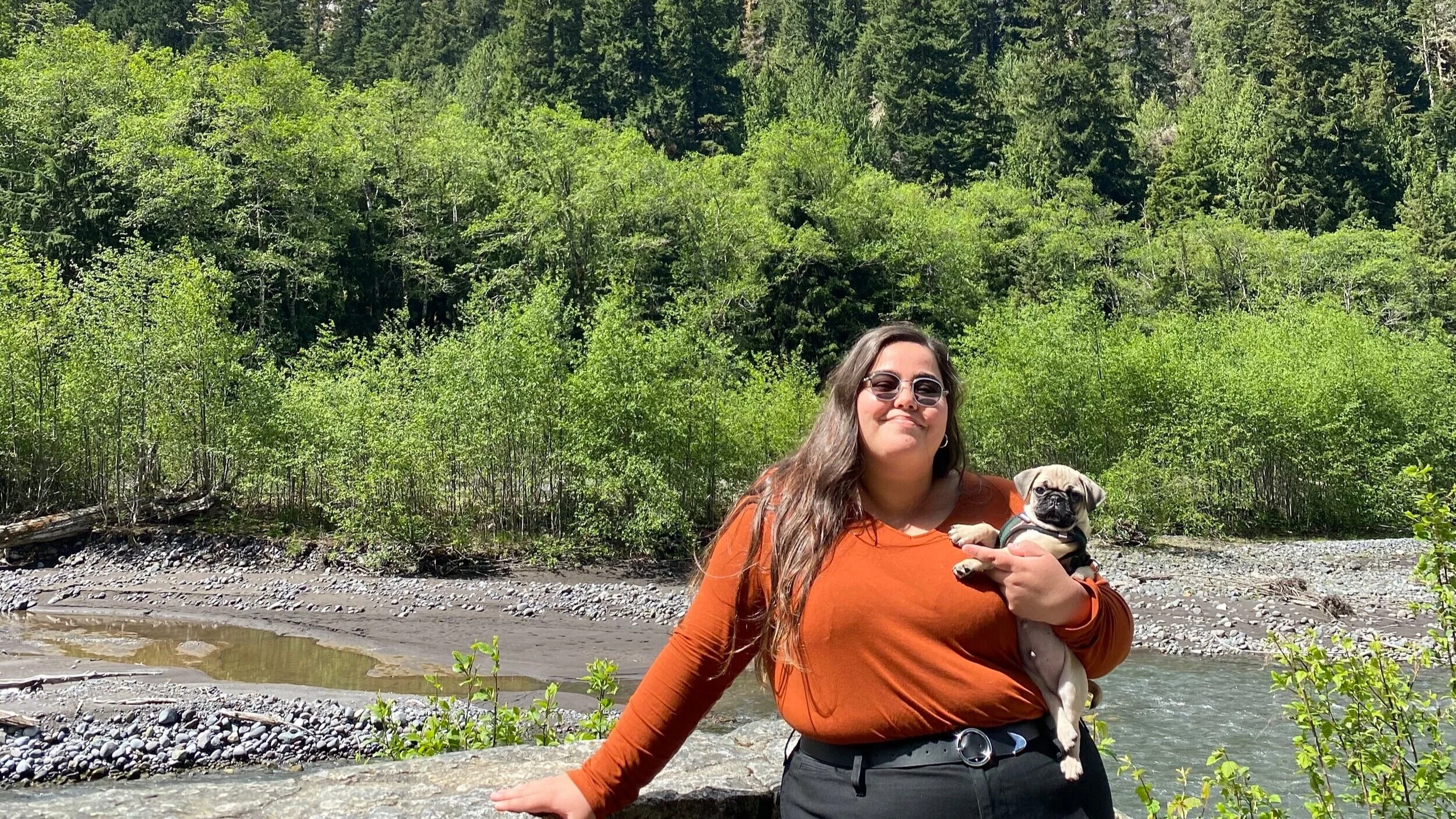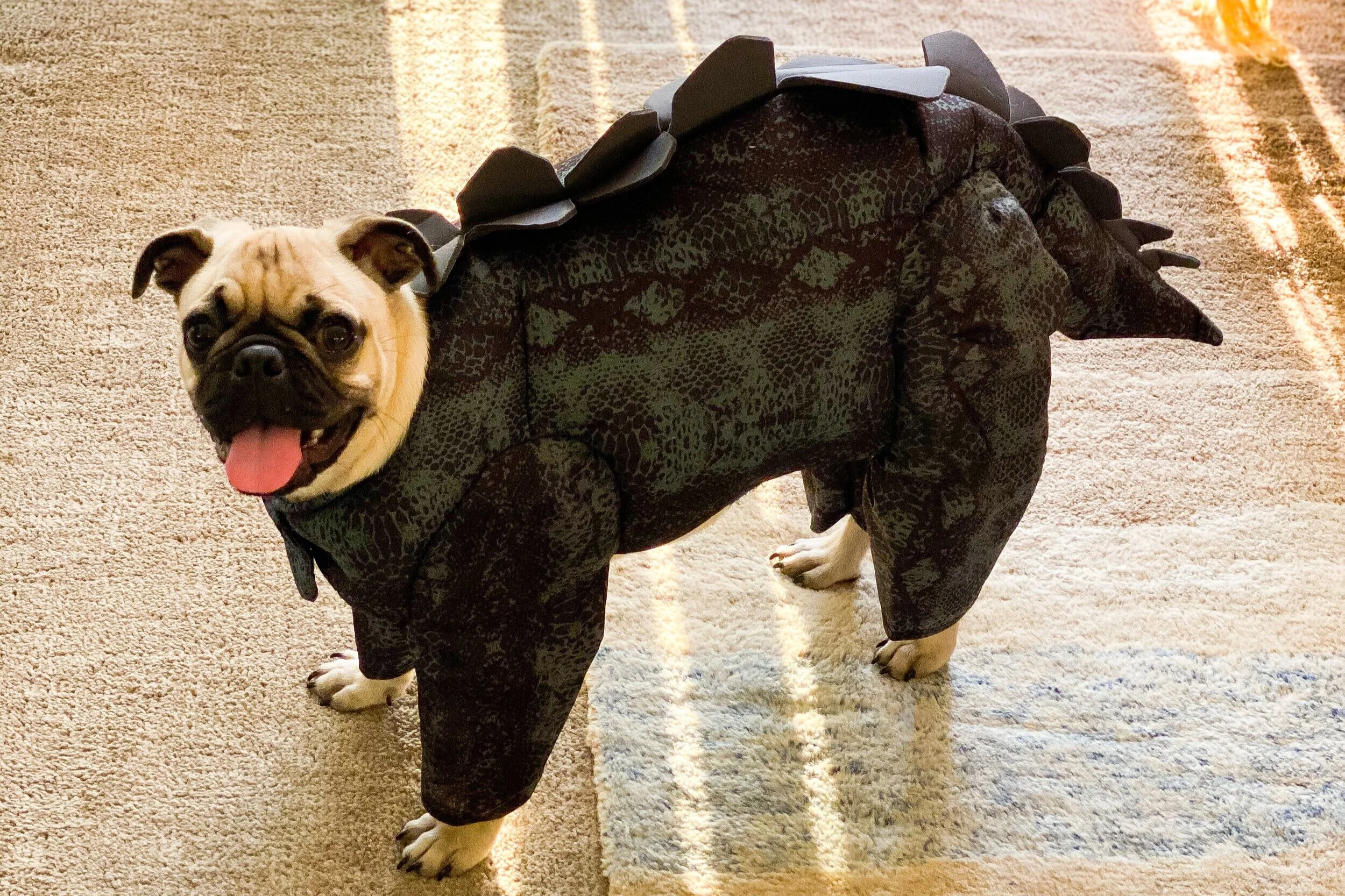How To: Survive Your First Puppy
Any preconceived notions you may have about the responsibilities behind having a puppy, go ahead and throw them out of mf’ing window. Everyone, and I mean everyone, will remind you that having a puppy is going to be hard – believe them. Like me, you might want to shake those comments off and assure yourself that you’ve got this, that it can’t be that hard to have a puppy… well, it is! It’s so hard having a puppy! I’ve officially survived my first 9 months with my first puppy Lupe, who is a pug. We got Lupe when he was eight weeks old and as soon as they plopped his mostly-belly-body in my arms, there was no way he would ever leave. I literally feel emotional typing this now and I recognize how lame it is, maybe it’s because I’m listening to “I Miss You” by Beyonce.
My partner and I had been looking at getting a pup for a few months but the whole process of getting Lupe was done within 24 hours. Talk about a whirlwind. We ordered a few items from PetSmart, as well as one bag of food and a couple of toys. The next day we were driving home with our furever friend. Long story short, you’re going to need a lot more than those items, and more patience than you expect. Don’t freak, take a deep breath and let’s get through this together.
Here are 10 things you either need to know, need to do, or need to have before you bring your new puppy home.
1. Know that this furry thing will not be a puppy forever
… but you have to love it anyway. Dogs and puppies are not your temporary thing you decided to have on a whim. This is forever, get comfortable with that statement before bringing home a dog. Figure out if you’re even a dog person before bringing him or her home!
2. A few items to get you started
You should consider a crate, puppy gate (optional but highly recommended), food/water bowls, puppy friendly toys (these exist!), food (ask the previous owner what they were eating before so you don’t rush the change of food process), puppy pads, training treats and most importantly stain and odor remover. These are all basic necessities to get you and your puppy comfortable in their new home. I lagged on getting a puppy gate, so don’t make the same mistake as me, my dog would poop his crate if I left him alone for even two minutes – NOT an exaggeration. Lupe is fully crate trained now but it wasn’t easy along the way.
3. Have some money set aside.
Whether your adopting (go you!) or buying (that’s okay too!), you should have around $500-600 set aside. This amount doesn’t include the adoption fee cost or the price of your pup. I didn’t fully understand the amount of money that would go into my puppy within the first month, you gotta think about vaccinations and vet costs.
4. Know that accidents will happen.
Every day. Multiple times a day. Some days might be better than others. I’m not just talking about bathroom accidents. Your pup might chew your shoes, your couch, your plants (RIP Monstera), or anything they can give their adorable, destructive paws on. When things like this happen, just take a deep breath and remind yourself that they’re only a puppy. They WILL learn.
I also want to take note that it’s so so so important not to let your puppy see you angry when they have a bathroom accident. If you do, they’ll continue having accidents but will make sure you’re not watching them when they do it. You want your puppy to feel like they can trust you! Just take lots of deep breaths and grab that stain and odor remover.
5. Puppy proof your home
Depending on your home you may find it beneficial to do some deep cleaning – especially the floor! Your new puppy will be curious about what’s lying around on your floors. Make sure you do a thorough vacuum job to pick up any loose food or items that may harm your pup. If you have indoor plants, put them high enough that your pup won’t be able to reach them. You would be so surprised how many of your popular house plants are dangerous to dogs.
Pick up any loose articles of clothing and put shoes somewhere that the pup can’t reach. It’s helpful to restrict your pup to one area of your home – most people will do the kitchen or living room. You’ll want it to be a high traffic area, so they don’t feel alone. This will help your pup not get into things or areas they’re not supposed to.
6. Do your research on your breed before bringing home your pup
…you’ll want to know what you’re getting into. When we decided we wanted a pug, we knew they were susceptible to some health issues and we decided to go forth with it anyway. Stupid decision? I’ll let you know in 6 years or so!
You should only consider breeds of dogs that match up with your lifestyle. I’m not saying my household is lazy, but we decided on a pug because neither I nor my pug Lupe, plan on running 5 miles any time soon. If you’re looking for a running partner, don’t consider small breeds (pugs, chihuahua’s, Maltese). If you’re looking for someone to cuddle up on the couch with, don’t consider high-energy breeds (doodles, Aussies, goldens).
7. Plan to be home a lot!
We got Lupe when I found out I would be working from home for three months (going on 9 months!). This was the perfect situation for us to get a puppy, because someone would always be home. If you work 8+ hours a day and have no one to be home with your puppy, maybe consider taking some time off of work until your pup is comfortable on its own in your home. This is where apuppy gate comes in handy! It’s more space than their crate, but most times their crate can also attach to their gate. This way they can be restricted to a small portion of the house, away from all the things you don’t want them to destroy.
Pro tip: get a puppy cam (we have a furbo but there are a ton of options online), so you can check in on your pup throughout the day if you need to leave them home alone. This has given us so much comfort when we have to run errands without Lupe. The furbo is awesome because you can speak to them through the camera and has the option to shoot out treats at your dog.
8. Get pet insurance
… you’ll need it! Do some research online or ask your friends who have animals what insurance they have. The price varies depending on what your plan covers, as well as the age and breed of your dog. Pet insurance will give you peace of mind knowing that if something happens to your dog, you won’t be stuck with a giant vet bill, only a little giant vet bill. It’s also helpful to set up insurance for your puppy because they’ll be getting vaccination shots for what will seem like forever and the cost will start to add up without insurance.
Disclaimer: We initially got a plan through Banfield pet hospital through Petsmart and I wouldn’t recommend it. While it’s nice for the vaccinations, you have to sign a year contract and it’s not really pet insurance, it just includes free visits if you need to take your dog in and yearly dental exams. So, say your dog breaks his or her leg, the visit to Banfield is free – but you still have to pay for treatment. Full price. The best part about Banfield is probably the app. You can chat with an actual vet online if you feel like something’s up with your dog. They’re super helpful!
9. Soak it in!
… because soon your sweet puppy will be a wretched (but still cute!) teenager. Getting through the first 6 months of your puppy’s life will be challenging, your patience will be tested time and time again, but it’s so worth it. Take lots of pictures because the time will fly by so fast and before you know it, your puppy won’t really be a puppy anymore.
At the end of the day, whatever way you decide to own a puppy, just make sure you lead with love. That dog is going to love you through everything life throws at you, give them the same respect. Training, insurance or no insurance, food, toys – these are all things that are up to personal preference and what works for YOUR lifestyle. The last thing I want to leave you with is, Google and YouTube are going to be your best friend, utilize them. Good luck.


